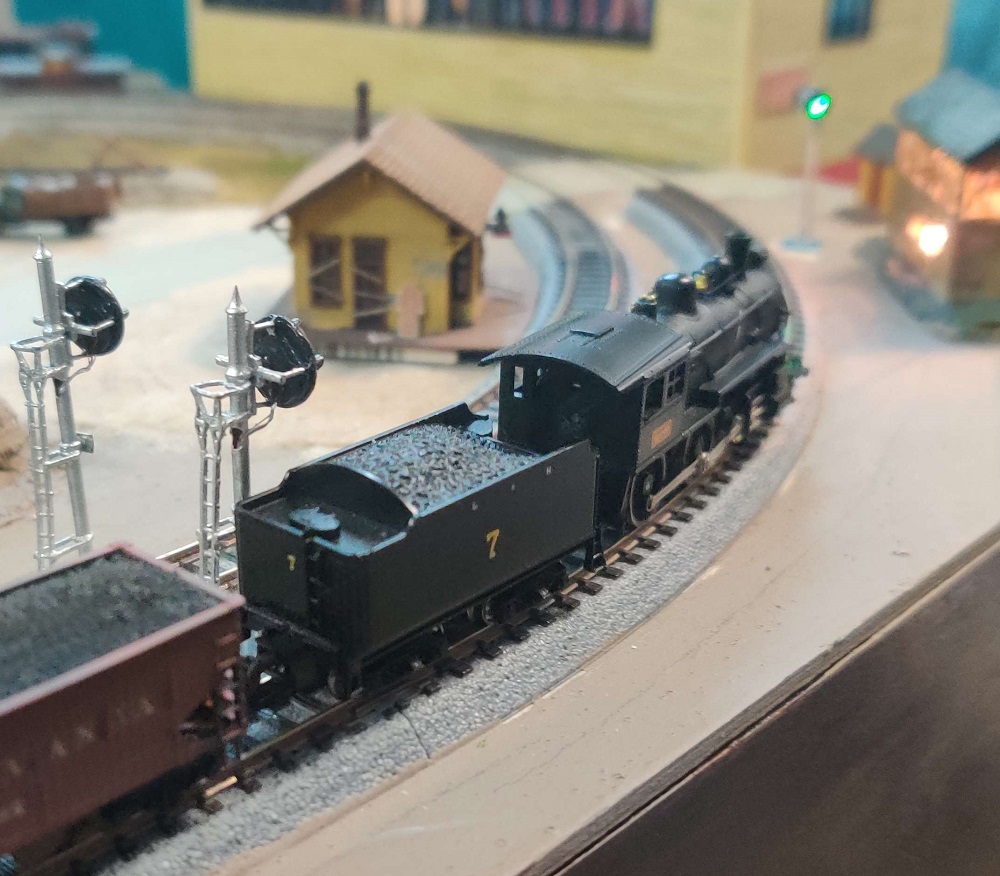On Sheet – Elbow-room TT&TO
On Sheet – Elbow-room TT&TO
 ne of the real problems with TT&TO (Time Table and Train Order) operations is the problem of running late. Let’s face it – true TT&TO means that the superior train does not wait for the inferior at meet points – he just blows on by. And given the problems with model railroading, it’s not uncommon to derail short of the meeting point with a superior train and suddenly you are sitting on single track with the Cannonball roaring your way. A lot of people actually shy away from TT&TO for this reason, the fact that under a fast clock, times (and disasters) are intensified.
ne of the real problems with TT&TO (Time Table and Train Order) operations is the problem of running late. Let’s face it – true TT&TO means that the superior train does not wait for the inferior at meet points – he just blows on by. And given the problems with model railroading, it’s not uncommon to derail short of the meeting point with a superior train and suddenly you are sitting on single track with the Cannonball roaring your way. A lot of people actually shy away from TT&TO for this reason, the fact that under a fast clock, times (and disasters) are intensified.
Even on my tiny Tuscarora, we run TT&TO and the coal extras sometimes breeze into town a bit late and stab a scheduled train. Most coal extras have learned to loiter up in Easton or Westly until a meet order has been issued, safely allowing them to come into Tuscarora.
So I’m reading a wonderful book, Extra South by H. Reid. A large section of the book deals with the East Tennessee and Western North Carolina Railroad (also known as the “Tweetsie”). In the end of the section, they included an employee timetable. Basic operating rules for the line were also included, where I saw the following.
Trains will wait on each other at all meeting or passing points thirty (30) minutes.
This is a very interesting “special rule”, one I’ve never seen but of practical importance to TT&TO operators on model railroads. It is literally a built-in cushion. So, yes, if you need to meet a superior train at 8:01, it will still wait for you until 8:31. This gives you valuable re-railing time and covers your bets (and your ass). Further is the rule…
No delayed train shall attempt to run to a meeting point after it gets twenty-five (25) minutes behind its regular time.
So now you are covered by those “I think I can, I think I can” hotdogs who get behind and try to run in with a minute to spare. You further protects your trains but allow for occasional operational delays.
This is an extremely interesting prototype practice to adapt to our operations. It allows crews to feel a bit safer when running tight to the clock, and keeps crews from worrying about getting called out for a session-blushing moment. It will help your operators feel a little more secure when tackling the great game: Time Table & Train Order operations.
Consider it for your operations. I know our club will be adapting to this on our next TT&TO special session.

